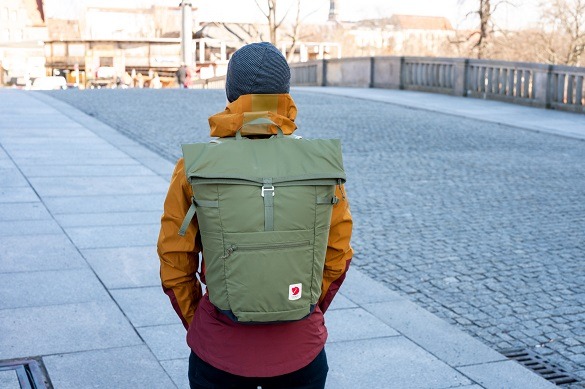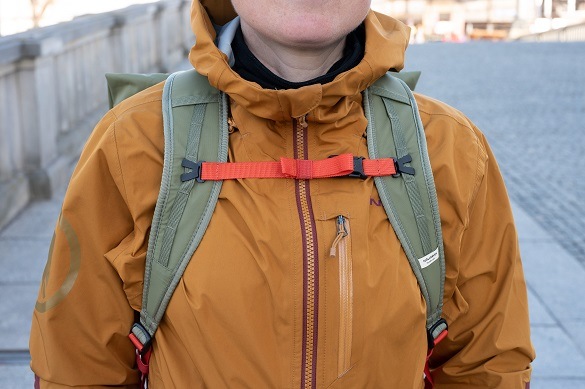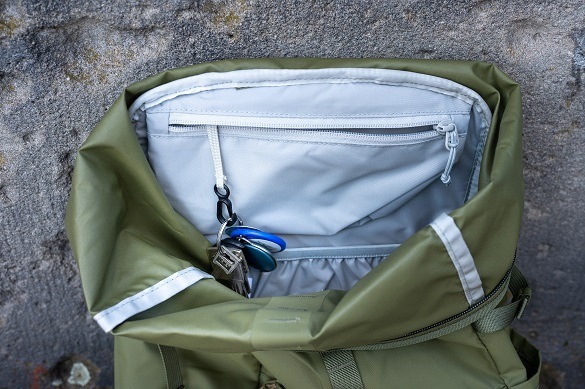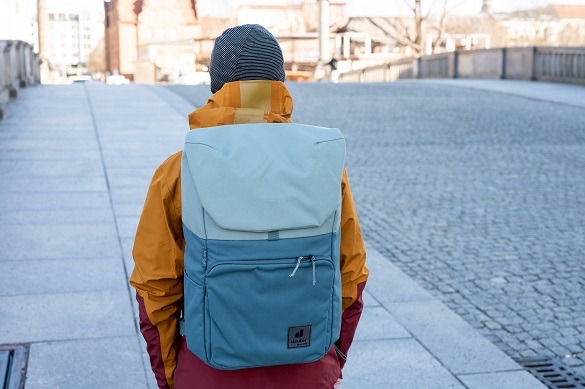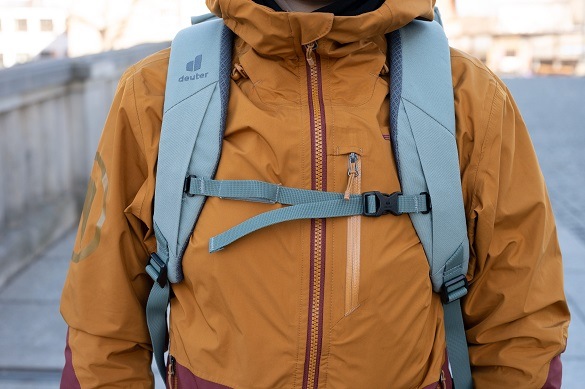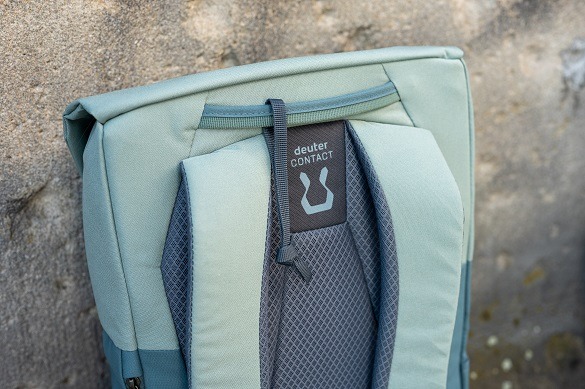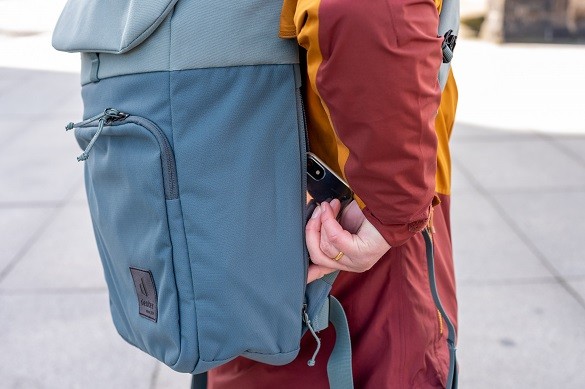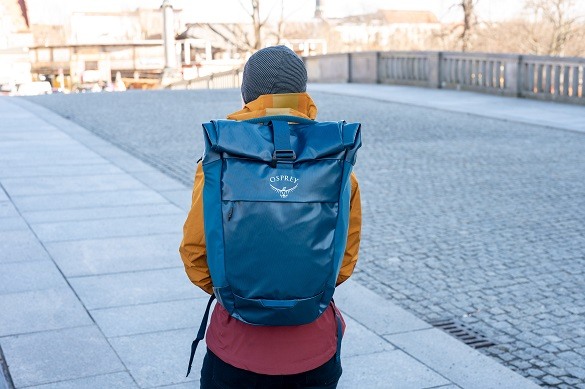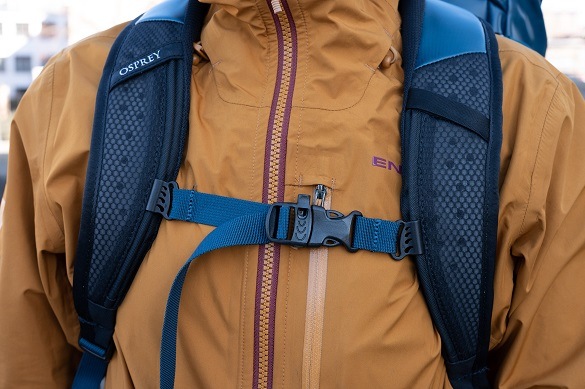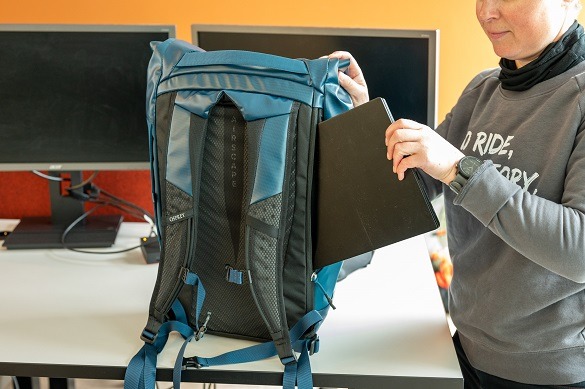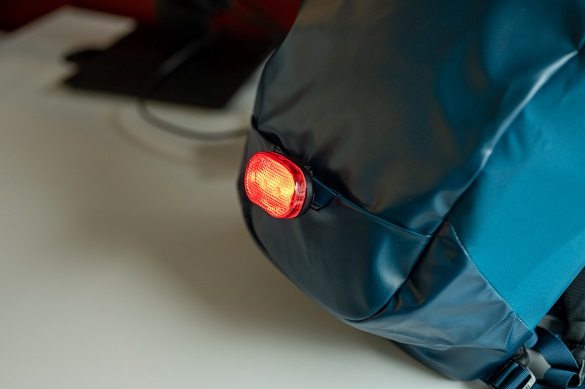Three daypacks under the spotlight: find the right backpack for you
Are you looking for a backpack for your commute to the office or need a rucksack for a day trip that is not too big and not too small but just right? Do you want to have the option to carry a laptop, lunch box, jumper, water bottle and some groceries practically and comfortably? We’ve been testing the attributes of three current daypacks and can tell you what you need to look out for when making your choice.
The reviewed products
Whether you’re out and about in the city or on a trip to the countryside, there are always a few essentials you need to bring with you and a daypack is the best way to transport them. Our three models offer strong all-rounder qualities, although each also has its strengths and weaknesses. But first, we explain in the next paragraph what actually makes a bag a daypack or laptop backpack.
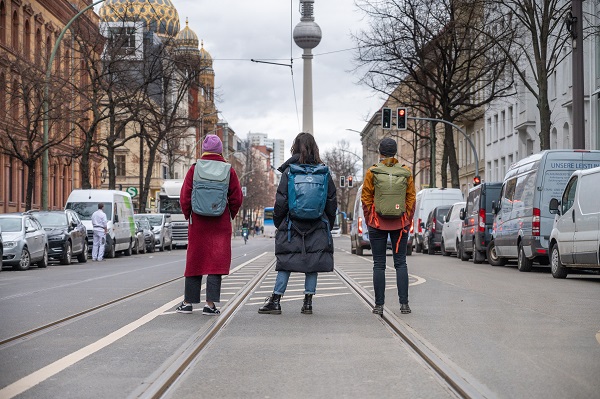
What are daypacks or laptop backpacks?
Basically, a daypack is a jack of all trades. Not too big, not too small, not too heavy, not as simple as a tote bag but not as technical as a trekking backpack with a carrying frame. It should be waterproof and, for the office, a laptop compartment (preferably padded) is important.
Conversely, this means that although a daypack usually offers all this in some form, the focus of the individual backpacks varies. Some are better suited for the office because they have a particularly large, padded laptop compartment for devices up to 17 inches. Others do best on a day in the great outdoors because they are ultra-lightweight but waterproof and have exterior mesh pockets for water bottles.
Daypacks are usually relatively compact and offer a capacity of 15 to 30 litres. The recommended load is consequently quite low, up to a maximum of 8 kilograms.
The carrying systems are correspondingly simple. Chest and hip straps are usually unpadded and narrow, but removable and adjustable so that the daypacks, especially if they come in a unisex version, also fit people of different heights and widths. This is also the case with the three models we present here.
The back padding is also rather minimalistic although a mesh back is generally standard, as in our three models. Some daypacks have slightly more advanced back ventilation and padding, as we will see further on.
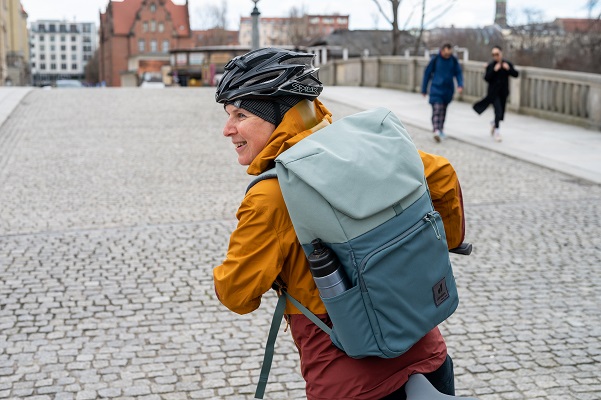
What are the defining features of a good daypack?
Because many daypacks are used for hiking as well as in the office, for shopping and commuting to work or sports, elements such as a laptop compartment and several compartments on the inside and outside of the daypack are now considered basic features.
In the next section, we will go through the characteristics to look out for according to the intended use.
For the city, everyday life and getting to work
The advantage of a backpack with many compartments is that you can keep different items such as keys, your mobile phone, wallet and even your laptop, water bottle and any spontaneous food purchases separate from each other and easy to find. A clip is perfect for finding your keys quickly when you don’t want to have to dig your laptop out from between your sports shorts and bananas. A padded laptop compartment also keeps your device better protected. In this respect, we liked the Osprey Transporter the best out of our comparison selection, thanks to its separately accessible padded laptop compartment.
For this reason, there should also be separate external pockets for things that could damage or get the contents of the backpack dirty, such as leaking water bottles or wet umbrellas. Ideally, these should be made of stretchy mesh material, which adapts to the size of the stored item to a certain degree and allows it to dry quickly. Umbrellas and bottles are also more easily accessible in the outer pockets, while valuables are better stored in an inner zip pocket.
If a daypack has many compartments, the weight distribution of the fully packed backpack is also better. Small organiser compartments are also useful, where you can store documents or pens.
A roll top is also a practical element so that you can expand the backpack upwards if you need end up spontaneously in the supermarket.
For day trips and travelling
If you have to carry a backpack for a long time, it is important that it weighs as little as possible and is compact. Ergonomically shaped, padded straps are also an advantage here. If you are travelling by plane, your daypack should be as small as possible, because some airlines have strict guidelines regarding the dimensions of hand luggage. In this case, it is also ideal if your backpack has compression straps and a roll-top closure, so you can reduce the dimensions.
If you are going to be outdoors for a long time, it is essential that the backpack is robust and above all waterproof. The distribution of your items over several compartments and an outer mesh pocket for your water bottle are also very practical when hiking..
When it comes to weight, compressibility and water resistance, the Fjällräven High Coast is ahead of the game with its compression straps, roll-top closure and tear-resistant, waterproof Bergshell material that Fjällräven developed in-house.
When it comes to comfort, the deuter Sydney really comes into its own with a mesh Contact System cushion that hugs the back and lightly padded, S-shaped straps for good ventilation and control while wearing.
For cycling in the city
First of all, there are highly specialised backpacks for sports cycling, for example, mountain biking or cycle touring, which have particular features such as back pads, helmet fastening options or hydration systems.
Above all, the fit is different, because it is designed for a more extended position on the bike. That’s why backpacks purely for cycling are already “pre-curved” and don’t usually sit directly against the back.
Nevertheless, there are some useful features that classic daypacks may have that make cycling in the city or commuting more pleasant. These include, for example, a holder for a mobile light on the Osprey Transporter or the low design of the deuter Sydney, which cannot be extended upwards due to the magnetic lid closure and thus cannot come into conflict with your helmet in an extended position. All three daypacks are also so narrow that you can look past them easily when you turn around on your bike.
Our three daypack models in comparison: deuter UP Sydney, Osprey Transporter and Fjällräven High Coast Foldsack 24
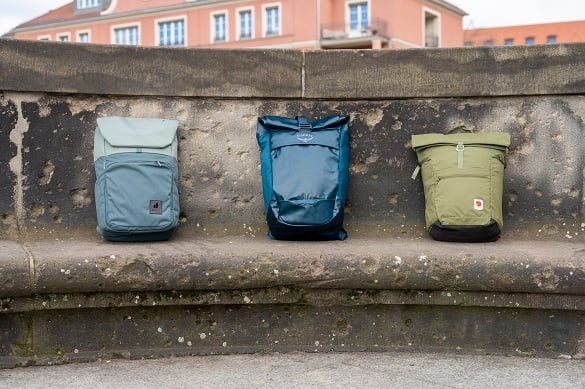
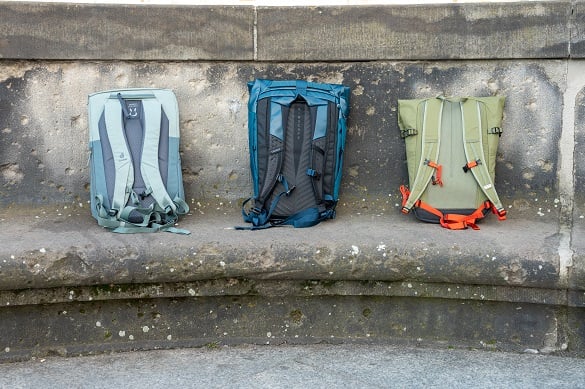
Something that we liked a lot is that all three models have many internal and external compartments. All of them have stretch pockets on the outside for bottles or umbrellas, and the deuter and the Fjällräven go one step further with zipped pockets for valuables on the inside. The Osprey has the best laptop compartment, but even here it isn’t 17 inches. Osprey still offers space for 16, the other two just for 15-inch devices. All three have a key clip.
When it comes to travelling light, the Fjällräven backpack is unbeatable. At only 460 grams, it weighs just half as much as the Osprey, although the latter holds four litres more. In addition, the Fjällräven can be rolled up small and taken along as an extra bag. This daypack also has the edge in terms of water resistance and robustness. Although not one of the three backpacks is 100% waterproof, which is due to the unsealed seams and zips, the Fjällräven’s Bergshell material is completely waterproof. All three backpacks are DWR-coated, however, and absolute waterproofness can only really be expected from specialised trekking backpacks. If you want a waterproof laptop backpack, you should take the precaution of storing your device in a plastic bag inside the backpack.
The Fjällräven has the smallest pack size and all three daypacks have handles on top and compact designs for easy manoeuvrability. The chest and hip straps are quite minimalistic on all three and could be a little more comfortable, but their adjustability does what is necessary to keep the packs securely in place. The deuter has the most comfortable strap and back padding system. Nice extras, such as a signal whistle on the chest strap buckle and an attachment loop for an LED light are included on the Osprey.
The roll-top closures featured on the Osprey and Fjällräven are practical for when you want to increase or decrease the volume.
All three models have a tasteful, contemporary and urban appearance which also looks good on a trip to the countryside.
Further details can be found in the following overview table.
| Model | deuter UP Sydney | Osprey Transporter Roll Top | Fjällräven High Coast Foldsack 24 |
| RRP | £113.99 | £113.99 | £86.99 |
| Backpack weight | 880 g | 910 g | 460 g |
| Capacity | 22 l | 28 l | 24 l |
| Dimensions (H x W x D) cm | 50 / 30 / 16 | 52 / 32 / 23 | 45 / 26 / 20 |
| Closure system | Top loader, magnetic flap system with hook, slightly adjustable | Top loader, roll closure with strap; volume adjustable | Top loader, roll closure with zip and hook; volume adjustable |
| Laptop compartment | Max. 15", laptop and additional tablet compartment | Max. 16", padded, separately accessible via side zip pocket | Max. 15" |
| Pockets /compartment composition | Internal pockets: zip pocket for valuables, small side stretch pocket External pockets: divided zip front compartment, side zip compartment, side stretch compartment | Inside pockets: document compartment, organiser compartment (Power-Mesh™ compartments) External pockets: front zip compartment, side stretch mesh pocket for water bottle | Internal pocket: zip pocket for valuables External pockets: zip front compartment, two open side pockets for bottles, etc. |
| Key clip | Yes | Yes | Yes |
| Waterproof? | Water repellent, DWR coating | Water repellent, TPU coating and waterproof roll closure prevent water from entering, DWR treatment | Main body: waterproof 210D polyamide Bottom: waterproof Bergshell, DWR coating |
| Robust outer material? | Moderately, cotton look | Durable TPU | Bergshell (tear- and abrasion-resistant ripstop) |
| Sustainability certificates | 100% recycled PET, bluesign product, PFC-free, Grüner Knopf | 100% recycled polyester (GRS), bluesign approved, PFC-free | PFC-free waterproofing, recycled nylon |
| Carry system, straps | Hip belt: unpadded, narrow, detachable, adjustable Chest strap: unpadded, narrow, detachable, adjustable Carrying system: lightly padded, S-shaped straps | Hip belt: unpadded, narrow, detachable, adjustable Chest strap: unpadded, narrow, detachable, adjustable Carrying system: die-cut EVA straps | Hip belt: unpadded, narrow, detachable, adjustable Chest strap: unpadded, narrow, detachable, adjustable Carrying system: lightly padded straps |
| Back cushioning | deuter Contact System, close-fitting with mesh cover | AirScape™ back panel with foam ridges (mesh) | None |
| Handle on top | Yes | Yes | Yes |
| Extras | Rain cover available separately | Signal whistle on chest strap, LED light attachment loop | Compression straps for minimising the volume at the sides and for attaching equipment |
| Target group (in this order) | Lifestyle, city, commuting, urban-outdoor, cycling, day trips | Commuting, office, city, athleisure, travelling, cycling, urban-outdoor | Urban lifestyle, travelling, commuting, athleisure, urban-outdoor |
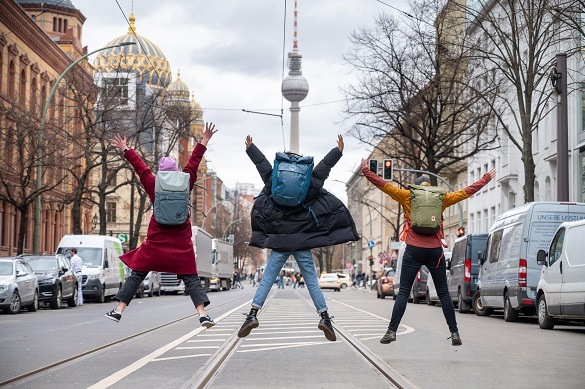
Summary
All three backpacks do well in many different respects. Here is a summary of the advantages and disadvantages of each daypack.
The deuter UP Sydney excels with many useful compartments for keys and provisions and the top-loading closure ensures a low design – this can be an advantage, especially when cycling. Furthermore, the bottom is padded and stands securely on a surface when you want to unpack or pack something. Deuter is known for its ergonomic fit and here you also benefit from s-shaped shoulder straps for that extra portion of comfort. Our only criticisms are the low load capacity (3–6 kg) and the fact that you can barely expand it.
The Osprey Transporter Roll Top backpack is particularly impressive with its large padded laptop compartment which can be accessed separately. All in all, the Osprey has many clever organisational compartments and even an attachment option for a light. It can be expanded to carry more stuff thanks to the roll-top. What we don’t like so much, however, is the high weight of the backpack.
Last but not least, we have the Fjällräven High Coast Foldsack 24, which you can roll up into a compact bag to take as extra luggage. It is also suitable as a piece of hand luggage and, despite its handy size, has many useful additional compartments and is robustly built. As if that wasn’t enough, you can expand it upwards and to the side. But this practicality also comes with small disadvantages: it has no back padding and thus only a simple laptop compartment.
The three daypacks presented here are similar in many respects, but each has its strengths and weaknesses in other areas. Which model you choose ultimately depends on your intended use. Is a well-designed laptop compartment more important to you or a lightweight, weatherproof backpack for a day trip into nature? You can also use our filters on the left of the daypack product page to find your future favourite backpack.

